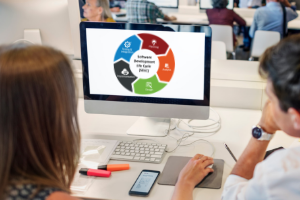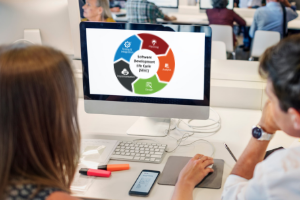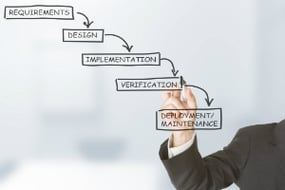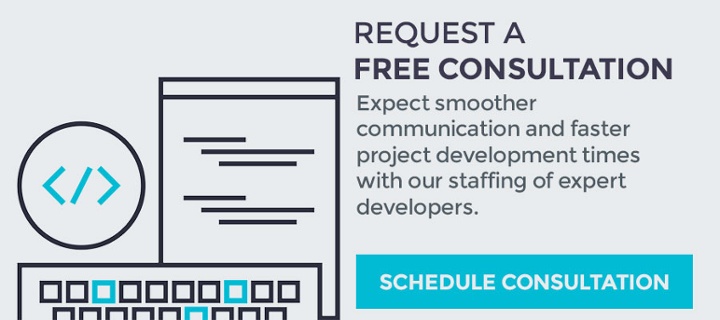
 When it comes to software development, there is no universal method that can be applied to every type of project. Therefore, team leaders make use of different software development life cycle (SDLC) methodologies according to their unique budget, goals, timing, and other factors.
When it comes to software development, there is no universal method that can be applied to every type of project. Therefore, team leaders make use of different software development life cycle (SDLC) methodologies according to their unique budget, goals, timing, and other factors.
Think of SDLC methodologies as tools that you can use to deliver your software project better. Knowing and understanding each approach, as well as when to use it, is important. It’s also essential to be aware of the advantages and disadvantages of each one to easily identify which model is ideal for the project context.
Agile and waterfall are the most-used SDLC methodologies in the field of modern software development. In this blog, we will focus on the waterfall model and what makes it an effective SDLC process.
Waterfall Model: An Overview
First introduced in a paper by Dr. Winston W. Royce in 1970, the waterfall model is the pioneer of all SDLC processes. It was also the first model widely used in the software industry.
This model is divided into phases and the output of each phase becomes the input of the next. Every phase needs to be completed first before a succeeding phase could begin. In short, overlapping will not happen in the waterfall model.
Because of its nature, each stage of the waterfall model is well-defined. The phases fall from a higher level down to a lower level similar to a waterfall, hence the name.
When to Use the Waterfall Model
This SDLC method is perfect for projects where making alterations to the initial plan can be very costly. Waterfall is recommended to be applied in the following instances:
- When the main constraint is on the development area instead of the financial
- There is a clear idea of how the final product should turn out
- Projects with requirements that are clearly defined
- The technology is understandable without any ambiguous requirements
- The client has no plans of actively participating in the development process but will evaluate the final product
Aside from the above-mentioned cases, waterfall is also the best model for projects that migrate from one platform to the next, with the condition that all requirements remain the same. The only change allowed is the programming language and/or system environment.
The Six Stages of the Waterfall Model
 1. Requirement Analysis
1. Requirement AnalysisAll of the possible requirements of the system that will be developed are identified and documented in this stage.
2. System DesignFrom the first phase, the requirement specifications and the system design will be prepared. This allows developers to specify system requirements and hardware, as well as define the complete system architecture.
3. ImplementationWith input from the previous stage, the system will then be developed in small programs referred to as “units.” Each of those units is developed and tested–a stage also called Unit Testing.
4. Testing and IntegrationOnce the implementation stage is done, all units are integrated into a system following the testing process. Post-integration is a step where the entire system is tested for any failures.
5. System DeploymentWhen both functional and nonfunctional testing is done, the product is either released into the market or deployed in the client environment.
6. Maintenance
There are possible issues that could come up once the software is deployed. To address those problems, developers release patches as part of the maintenance stage. Better versions might be released to improve the product even more. Maintenance is conducted to deliver these changes to the client environment.
What are the Benefits of the Waterfall Model?
Better Information Transfer
Compared to other SDLC methodologies, waterfall’s approach is very methodical. This should not come as a surprise, considering that the method focuses on a clear transfer of information in every step. When used in software development, each new step includes a new group of people. While that might not be the case in all companies, the information should still be documented throughout the lifecycle of the product.
Whether you are experiencing unexpected changes in personnel or simply passing projects off at every step, waterfall always prioritizes accessible information. This helps make new additions to the team up to date quickly if necessary. If you want to maximize your benefits from this waterfall characteristic, you should stay organized with the right process.
Clear Structure
Waterfall prioritizes a clean and defined set of steps, unlike other SDLC methodologies. It has a structure that is both simple and straightforward.
Teams are required to finish an entire step first before transitioning into the next one. This means if there are challenges to completion, they are identified and solved immediately. Projects that are half-finished are less likely to be pushed aside, so teams using this method end up with a more polished and complete project.
The Goal is Identified Early
A great defining step of the waterfall method is fully committing to a goal, deliverable, or end product at the beginning stage. Teams are not allowed to deviate from that commitment. When it comes to small projects with clear goals, this step encourages your team to be aware of the goal from the start. This reduces the chances of getting lost in the details as the project continues through the cycle.
Compared to the scrum model which divides the project up into single sprints, waterfall keeps your team’s focus on one end goal at all times. If you have a solid goal with a clear end date, waterfall minimizes the risk of getting bogged down as you try to reach that goal.
Related Content: Agile VS Waterfall: An In-Depth Look
Final Thoughts
A lot has changed in the software development world over the years. It’s undeniable that agile is the go-to SDLC process for most developers right now but this does not mean the waterfall approach is going anywhere. Almost half a century after it was first introduced, waterfall continues to be relevant in the modern business world–but it shouldn't be used indiscriminately.
If one thing is for sure, this effective model is here to stay and it will still be applied to projects that are ideal for it.




